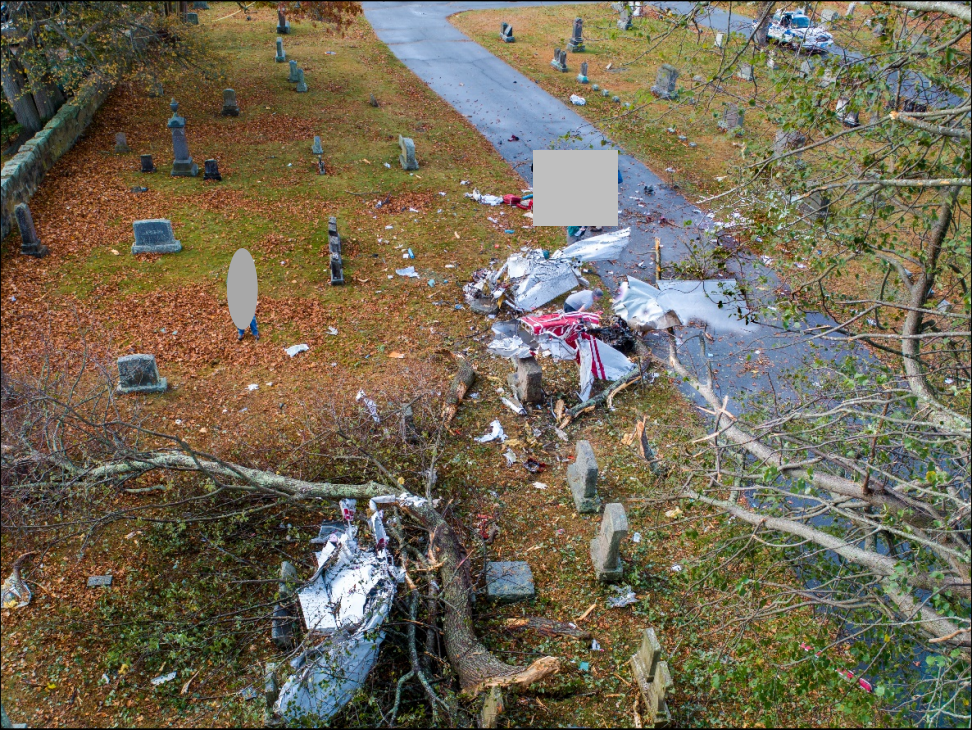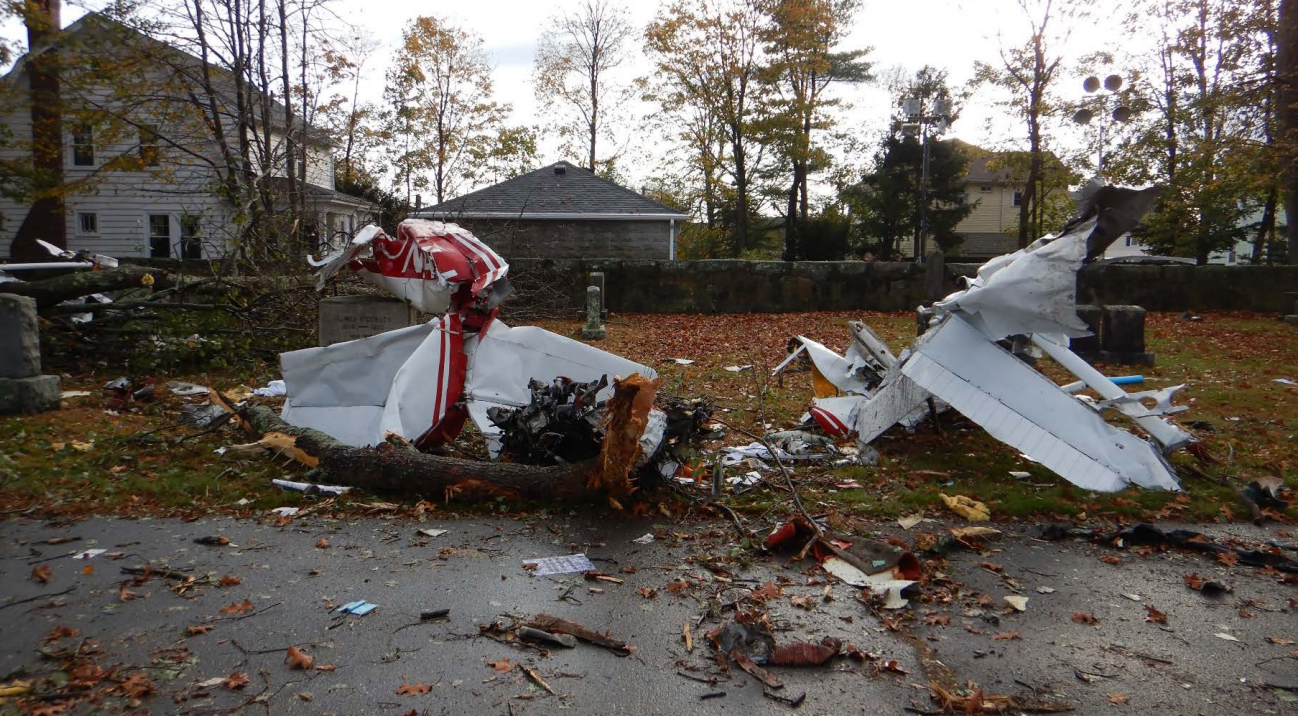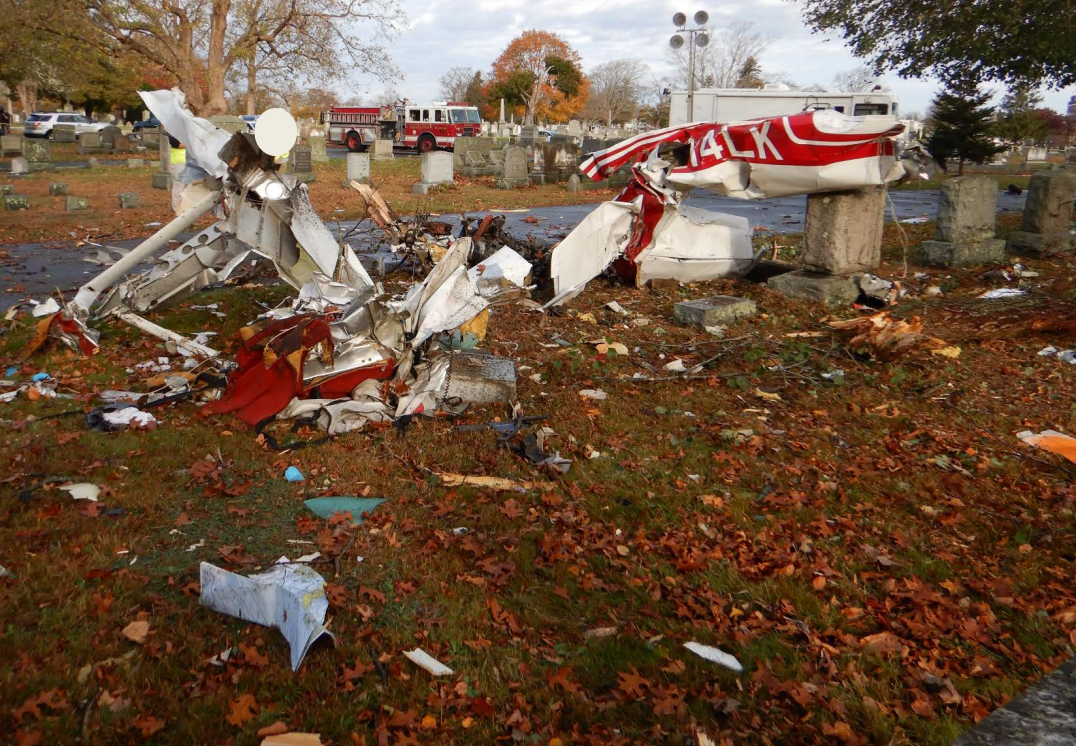
ASN Wikibase Occurrence # 230409
This information is added by users of ASN. Neither ASN nor the Flight Safety Foundation are responsible for the completeness or correctness of this information.
If you feel this information is incomplete or incorrect, you can submit corrected information.
| Date: | Monday 4 November 2019 |
| Time: | c. 15:30 |
| Type: |  Cessna 150M |
| Owner/operator: | Private |
| Registration: | N714LK |
| MSN: | 15079256 |
| Year of manufacture: | 1977 |
| Total airframe hrs: | 5050 hours |
| Engine model: | Continental O-200-A (48) |
| Fatalities: | Fatalities: 1 / Occupants: 1 |
| Aircraft damage: | Destroyed |
| Category: | Accident |
| Location: | near New Bedford Regional Airport (KEWB), New Bedford, MA -
 United States of America United States of America
|
| Phase: | Manoeuvring (airshow, firefighting, ag.ops.) |
| Nature: | Private |
| Departure airport: | New Bedford Airport, MA (EWB/KEWB) |
| New Bedford Airport, MA (EWB/KEWB) | |
| Investigating agency: | NTSB |
| Confidence Rating: |
The 74 year-old private pilot departed in his airplane during day visual meteorological conditions for a local flight. The airplane climbed to about 2,500 ft mean sea level after departure and tracked in a southwesterly direction for about 20 minutes. The airplane then began a gradual descent, turned to the northeast, flew along the shoreline, and turned toward the airport. The airplane descended to around 250 ft agl over a golf course fairway less than 3 nm from the Class D airport without communicating with the air traffic control as required. The airplane then commenced a steep, climbing right turn to an altitude of about 4,000 ft msl, when the airplane then descended rapidly in a left circular pattern. A witness near the accident site reported seeing the airplane descend like it was going to land, then climb very high, pivot on its left wing, and descend straight down. Other witnesses reported that the pilot seemed to be performing aerobatics. According to family members and close friends, this was highly unusual behavior for this pilot whom they all considered to be a “very conservative pilot.”
The pilot’s failure to communicate with air traffic control as required, his low-level flight over a fairway, and the erratic flight track and altitude changes that subsequently occurred in the absence of any meteorological conditions that could have restricted visibility are inconsistent with the pilot’s familiarity with the local airspace and his reported capabilities and are consistent with acute impairment.
The cause of the pilot’s impairment could not be identified from available medical evidence. Coronary artery disease was present on autopsy but whether it contributed to impairment could not be determined. Due to the severity of the pilot’s injuries, there was no available autopsy information about his brain. A negative result of a qualitative carboxyhemoglobin test of cavity blood by diffusion was the only available toxicological information about carbon monoxide (CO) exposure. However, a limitation of diffusion testing is that it may produce a false negative result if blood is contaminated with other body fluids, as sometimes occurs in cavity blood; that possibility could not be evaluated from available toxicological information.
However, the likelihood of CO impairment was also indicated after examination of the airplane, which revealed internal deterioration of the left muffler. The muffler metal was corroded and thin, and pin holes were observed on the sides of the muffler. The condition of the muffler would have allowed exhaust gasses, a common source of CO exposure, to leak into the cabin through the cabin heating system, which was found selected ON. CO poisoning can result from sufficient exposure, causing a wide variety of impairing effects, which may include serious neurocognitive and cardiac problems.
The muffler’s corrosion and thinning of the muffler wall, along with the holes in the muffler, were likely present at the time of the last inspection, which occurred about 5 months before the accident; however, due to damage from impact, it could not be determined if the extent that the muffler was degraded was readily visible at the time of inspection.
No other preimpact anomalies or malfunctions were identified during the examination that would have prevented normal operation.
Based on available operational and physical evidence, it is likely that the pilot was impaired due to CO exposure via the corroded muffler.
Probable Cause: Pilot impairment due to exposure to carbon monoxide as a result of undetected corrosion and holes in the engine’s left exhaust muffler.
Accident investigation:
 |
|
Sources:
https://www.southcoasttoday.com/news/20191104/pilot-killed-when-small-plane-crashes-into-new-bedfords-rural-cemetery
https://www.gazettenet.com/Officials-Pilot-dies-after-small-plane-crashes-in-cemetery-30044751
NTSB
https://registry.faa.gov/aircraftinquiry/NNum_Results.aspx?NNumbertxt=714LK
Location
Images:



Photos(c): NTSB
Media:
USA, MA, Peter Knudson, a spokesman for the National Transportation Safety Board, tells the Boston Globe the pilot of a Cessna 150 that crashed Monday at the Rural Cemetery in New Bedford has died.
— PLANES OF LEGEND (@PlanesOfLegend) November 5, 2019
ASN: https://t.co/lhqE7iB0rF
Press: https://t.co/fsKfnHwIdW pic.twitter.com/uwMaUAwFOt
Revision history:
| Date/time | Contributor | Updates |
|---|---|---|
| 05-Nov-2019 00:01 | Geno | Added |
| 05-Nov-2019 09:14 | Iceman 29 | Updated [Location, Source, Embed code] |
| 15-Mar-2022 01:24 | Captain Adam | Updated [Location, Nature, Destination airport, Source, Embed code, Narrative, Category, Accident report, Photo] |
| 15-Mar-2022 01:24 | Captain Adam | Updated [Photo] |
| 15-Mar-2022 01:26 | Captain Adam | Updated [Photo] |
Corrections or additions? ... Edit this accident description
The Aviation Safety Network is an exclusive service provided by:


 ©2024 Flight Safety Foundation
©2024 Flight Safety Foundation